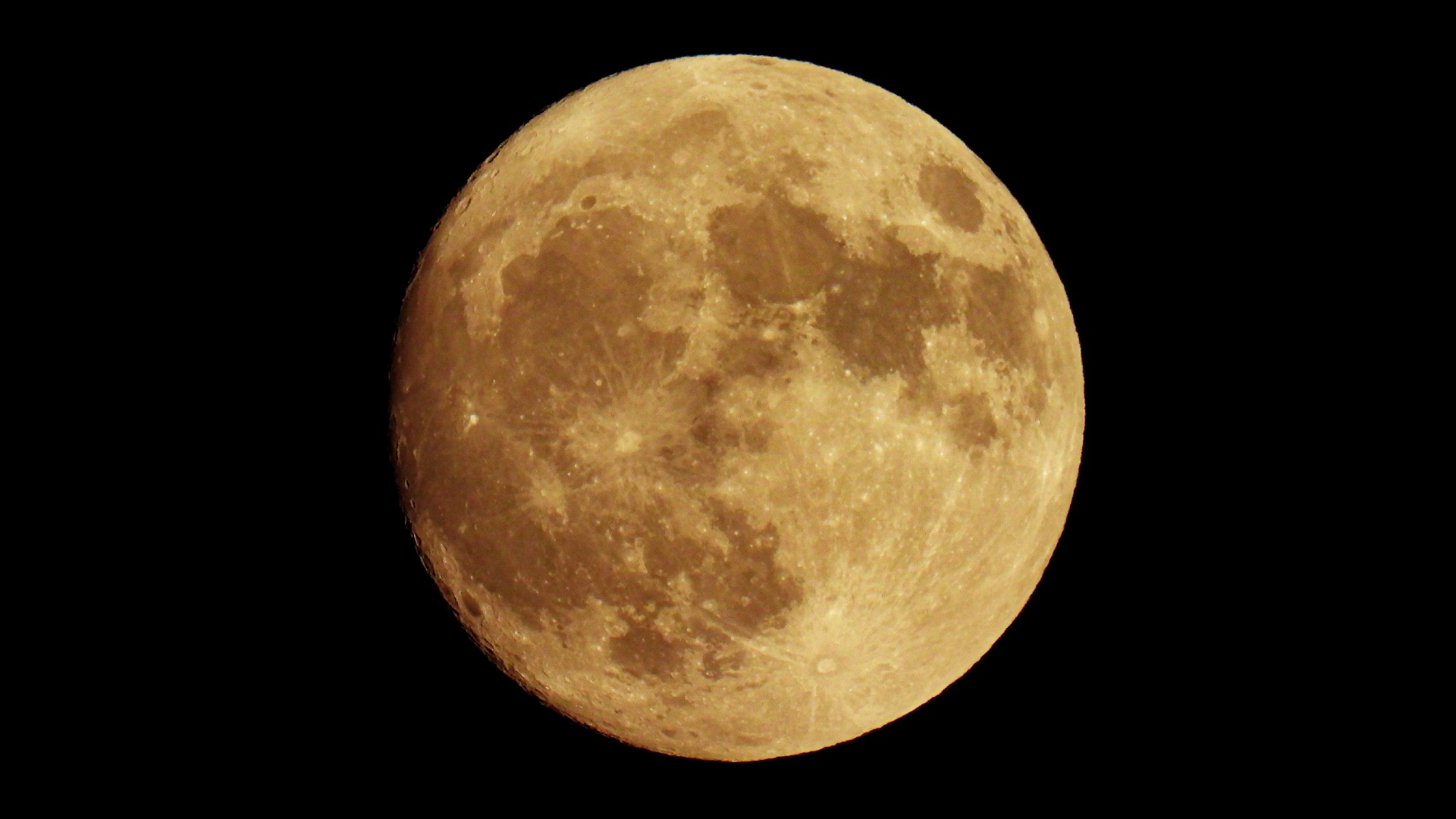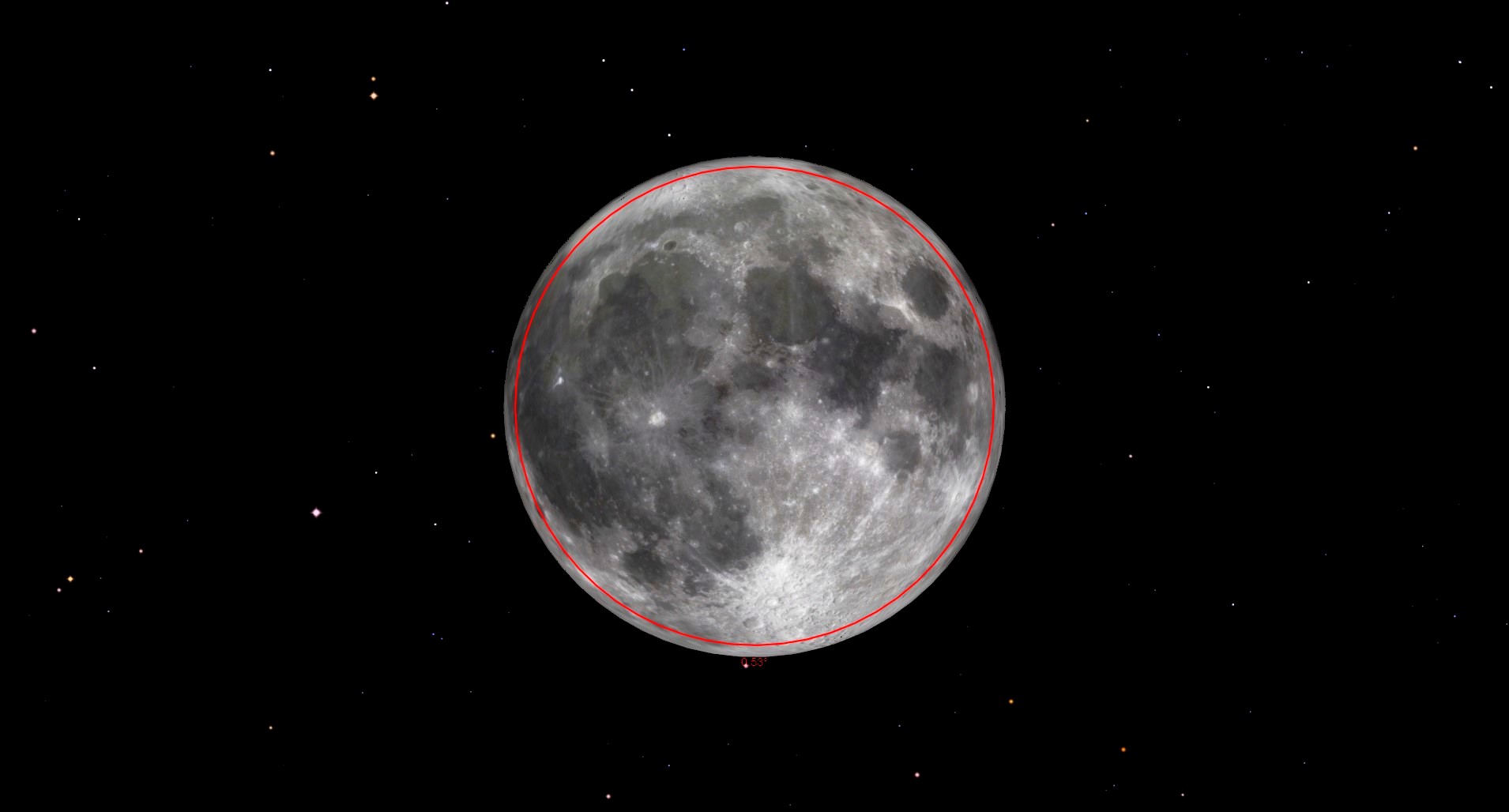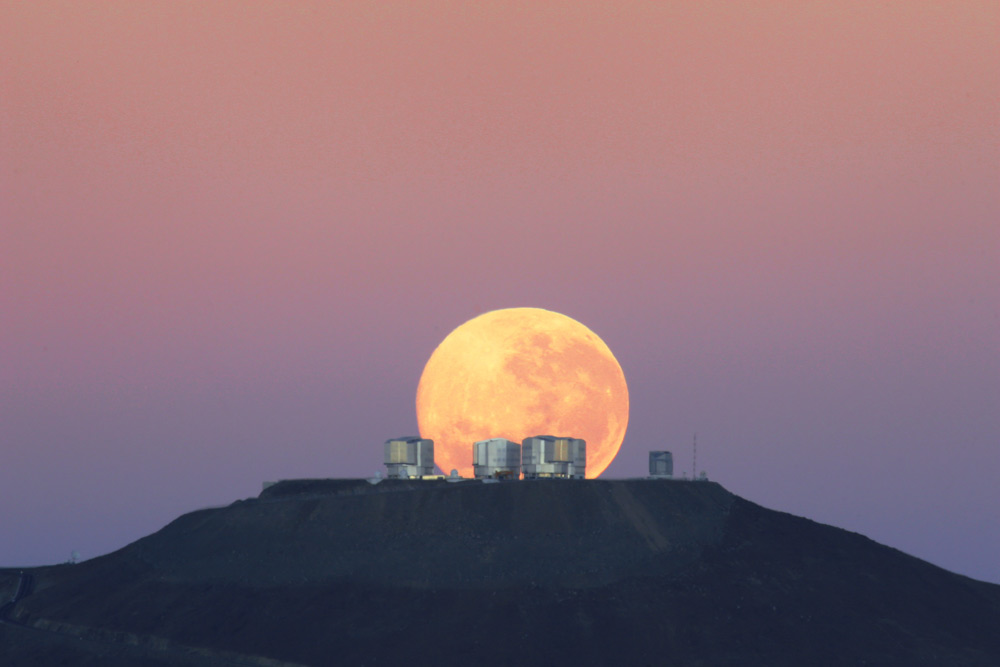
On Wednesday, Aug. 30, you'll no doubt hear the mainstream media proclaiming that on that night we will have an opportunity to witness a "supermoon." It's a term, or more specifically, a branding, of relatively recent origin. It originated not from astronomy, but astrology; first coined by an astrologer, who arbitrarily defined it as "a full moon which occurs with the moon at or near (within 90-percent of) its closest approach to Earth in a given orbit (perigee)."
Indeed, at 12 noon ET on that fifth Wednesday of August, the moon will arrive at perigee, its closest point in its orbit relative to Earth at 221,942 miles (357,181 km) away. And 9 hours and 36 minutes later, the moon will officially turn full. Although a full moon theoretically lasts just a moment, that moment is imperceptible to ordinary observation, and for a day or so before and after, most will speak of seeing the nearly full moon as "full": The shaded strip is so narrow, and changing in apparent width so slowly, that it is hard for the naked eye to tell whether it's present or which side it is.
And in addition to its "supermoon" status, this particular full moon will be the second to occur in the month of August, the first having occurred on Aug. 1. As a result, the second full moon of August on the 30th, will be also branded as a "Blue" moon. So, for what it's worth, what we'll have will be a "Super Blue Moon."
However, unless there is some unusual atmospheric condition present such as airborne dust, ash or smoke, the moon will not appear blue but its normal yellow-white self. Nonetheless, thanks to mainstream media hyperbole, many will likely look forward to getting a view of this big late summer moon.
Related: August Super Blue Moon guide 2023

Want to see the moon up close? We recommend the Celestron Astro Fi 102 as the top pick in our best beginner's telescope guide.
If you are hoping to catch a look at the full moon, our guide to the best binoculars could help you find some nice wide-angle optics for taking in larger areas of the lunar surface. Or, if you want to take a closer look at the features of the moon, our guide to the best telescopes can help you find the gear you need.
And if you're looking to take photos of our natural satellite or the night sky in general, check out our guide on how to photograph the moon, as well as our best cameras for astrophotography and best lenses for astrophotography.
This flood's for you
But there is also a drawback: A full moon nearly coinciding with perigee means that for several days around Aug. 30, the range of tides will be much larger than normal; low tides will be unusually low while high tides will run unusually high, perhaps even resulting in minor coastal flooding.
Such an extreme tide is known as a perigean spring tide, the word spring being derived from the German springen — to "spring up," and is not — as is often mistaken — a reference to the spring season. Every month, spring tides occur when the moon is full and new. At these times the moon and the sun form a line with the Earth, so their tidal effects add together. (The sun exerts a little less than half the tidal force of the moon.) "Neap tides," on the other hand, occur when the moon is at first and last quarter and works at cross-purposes with the sun. At these times tides are weak.
Tidal force varies as the inverse cube of an object's distance. On Wednesday the moon is 14 percent closer at perigee than at apogee. Therefore, it exerts 48 percent more tidal force during the spring tides of Aug. 30 than the spring tides near apogee two weeks earlier on Aug. 16.
And if a significant storm or a hurricane is offshore, working in concert with the already high-water levels, the consequences could lead to rough seas, beach erosion and major flooding.
We can only hope that such meteorological conditions do not materialize this year, though it should be pointed out that the traditional peak of the Atlantic hurricane season comes less than two weeks later, on Sept. 10.
Supermoon branding "watered down"
For years, astronomers classified a full moon that coincided with perigee as a "perigean full moon." A term that received little or no fanfare.
Now, it seems that every time a full moon coincides with perigee, it is referred to as a "supermoon." Some newscasters — in an apparent effort to hold your attention — refer to this occurrence as "rare," even though, in actuality, the moon turning full within hours of it arriving at perigee is not really such a rare occurrence.
In fact, on average, it occurs at an interval of once about every 413 days.
After next Wednesday, the next time this will happen will be on Oct. 17, 2024.
And yet the full moon of Aug. 1, which occurred about 11 and a half hours before perigee, as well as next month's full moon on Sept. 29 which comes nearly 33 hours after perigee, are also being branded as supermoons, seemingly because they fall within 90-percent of moon's closest approach to Earth. Or in other words, within the top 10-percent of the closest full moons for a given year.
So now in most years we have not just one but four "supermoons." In some years, there might be as few as two while in other years there could be as many as five!
But just how "rare" or "super" is that?

Unrealistic expectations: Bigger?
And while Wednesday's moon will be — as the Observer's Handbook of the Royal Astronomical Society of Canada suggests — the "largest full moon of 2023," (14% larger in apparent size compared to a full moon at apogee — its farthest from Earth) the variation of the moon's distance is not readily apparent to observers viewing the moon directly.
So, if you step outside and look at the moon on Wednesday night and expect to see something special, you'll likely be disappointed. There are always many images published on the internet in advance of a "Supermoon," displaying exceedingly large full moons, all taken with telephoto lenses, all implying that the moon is going to look amazingly large in the sky.
In fact, with no advance knowledge of the closeness of the full moon, it's likely most people would not notice any difference between Wednesday's full moon and any other full moon. However, once the "supermoon" concept is suggested, these same people will step outside, look up and declare that the moon does look much larger than normal; similar to the way the phrase "emperor's new clothes" has become an idiom about logical fallacies.
Brighter?
Then there is the issue regarding the moon's brightness. Websites speak of the "supermoon" appearing "30 percent brighter than other full moons." But that actually corresponds to a minuscule increase of less than three tenths of a magnitude; so, the moonlight on Wednesday night will not be exceptionally bright.
Yet, there are likely those who think that they will be seeing an exceptionally dazzling full moon that night. In June 2013, a friend of mine told me that she was expecting that year's version of the "supermoon" to look 'radically brighter,' "Like with those 3-way light bulbs; I thought it was going to be like turning the moonlight up a notch."
Instead, the moon's brightness looked no different compared to previous nights.

The moon illusion
Wednesday's moon might still appear enormous, but for a different reason.
When the perigee moon lies close to the horizon it can appear absolutely enormous. That is when the famous "moon illusion" combines with reality to produce a truly stunning view. For reasons not fully understood by astronomers or psychologists, a low-hanging moon looks incredibly large when hovering near to trees, buildings and other foreground objects.
The fact that the moon will be much closer than usual on Wednesday will only serve to amplify this strange effect.
So, a perigee moon, either rising in the east at sunset or dropping down in the west at sunrise might seem to make the moon appear so close that it almost appears that you could touch it. You can check out this out for yourself by first noting the times for moonrise and moonset for your area by going to this U.S. Naval Observatory website.
Don't overlook Saturn!
A full moon is positioned opposite to the sun in the sky. As it turns out, three days before the moon reaches this point in the sky, the planet Saturn will arrive at opposition to the sun, when it too is opposite to the sun in the sky. So, on Wednesday night, Saturn will "photobomb" the moon, being situated about 5 and a half degrees to its upper right.
Saturn of course is much farther than our nearest neighbor; it will be situated 814.6 million miles (1.31 billion km) or 73 light minutes from Earth. The ringed wonder will shine like a sedate yellow-white "star." The famous rings will be tilted 9-degrees toward Earth and are visible in high powered binoculars or small spotting scopes magnifying at least 25-power.
And so, regardless of exactly how you perceive Wednesday's full moon, we here at Space.com wish all of you clear, moonlit skies.
Joe Rao serves as an instructor and guest lecturer at New York's Hayden Planetarium. He writes about astronomy for Natural History magazine, the Farmers' Almanac and other publications.







